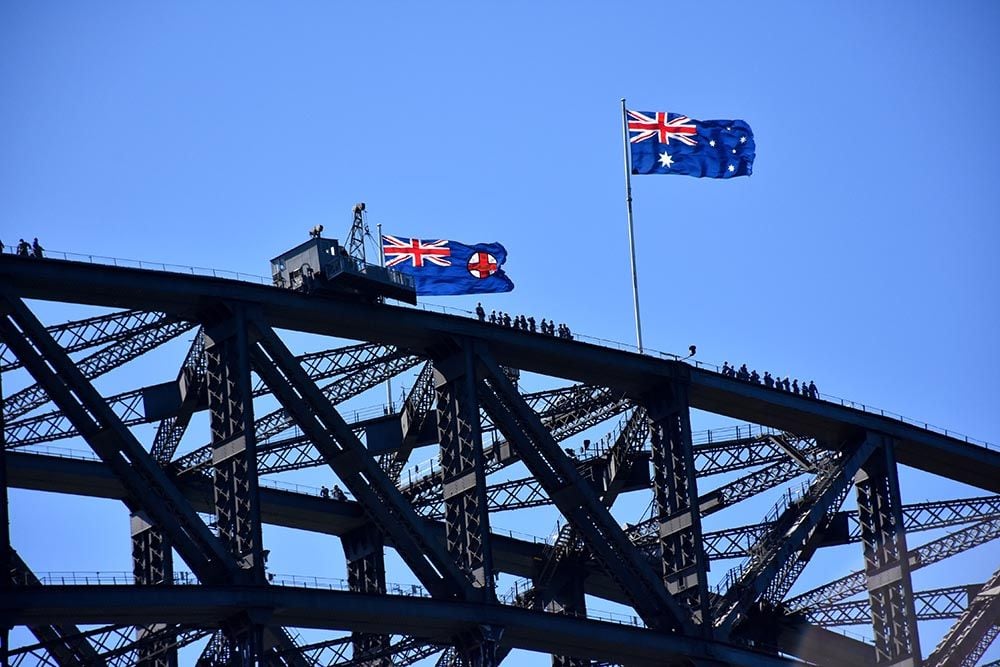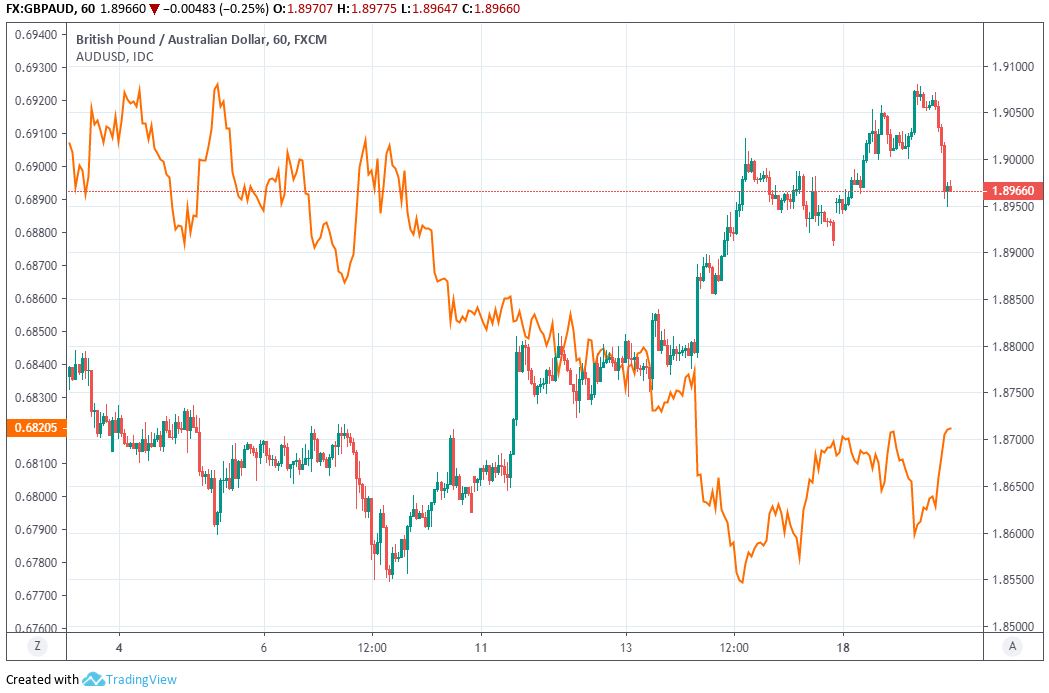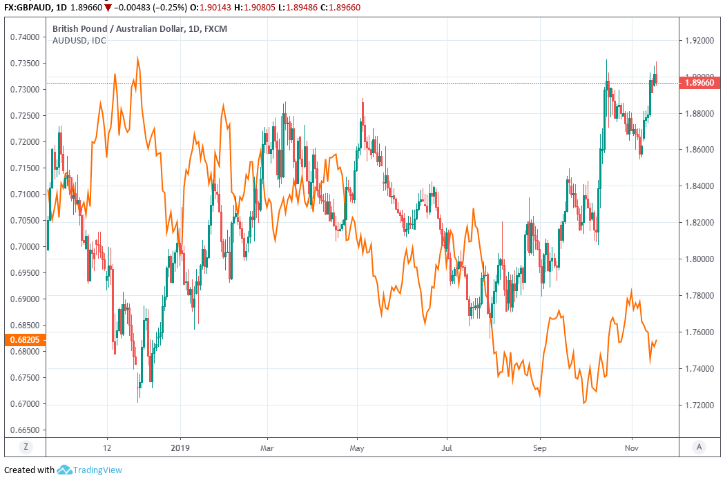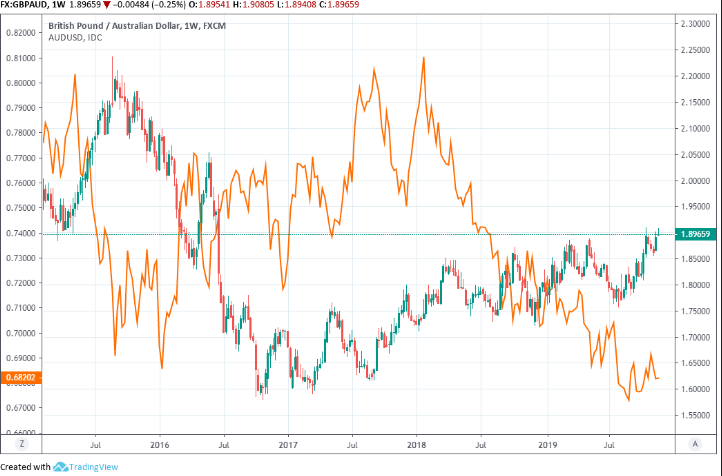The Australian Dollar Could Remain Under the RBA's Thumb into Year-end
- Written by: James Skinner

Image © Desiree Caplas, Adobe Stock
- AUD higher with risk asset but RBA minutes rankle.
- Minutes reveal economic worries, rate cut bias intact.
- The RBA held rates in Nov despite case for a fourth cut.
- Bank is worried about impact of rate cuts on confidence.
- Leaves market eyeing February for cash rate cut to 0.5%.
The Australian Dollar crept higher alongside other risk assets Tuesday but could find itself under the thumb of the Reserve Bank of Australia (RBA) in the weeks ahead after the minutes of the latest meeting revealed it's likely to cut the cash rate again and to a fresh record low before long.
Minutes of the November RBA meeting revealed on Tuesday that policymakers saw a clear case for a fourth 2019 rate cut this month but opted to wait and further observe the impact that earlier reductions in the cash rate, which has fallen from 1.5% to 0.75% this year, have had on the economy. The bank said "only gradual progress having been made" toward its objectives was reason enough to want to cut the cash rate again but it refrained from doing that.
"The Aussie was the biggest G10 FX mover overnight dropping about 0.4% to below 0.6800 against the US dollar and towards the month-low of 0.6770 on the back of the release of RBA minutes. The minutes suggested that the Australian central bank considered cutting interest rates further at its November 5 meeting," says Lee Hardman, a currency analyst at MUFG.
Markets had come to hope the RBA would not cut rates again at least until the New Year but the minutes may have put the December 03 meeting back on the table in the eyes of investors.
That would never have been welcomed by the Aussie but equally as problematic for the currency were the RBA's comments on the impact that cuts to the cash rate might be having on household confidence, because they have the potential to create confusion about the bank's 'reaction function'.
"While members judged that lower interest rates were supporting the economy through the usual transmission channels (including a lower exchange rate, higher asset prices and higher cash flows for borrowers), they recognised the negative effects of lower interest rates on savers and confidence. They also discussed the possibility that a further reduction in interest rates could have a different effect on confidence than in the past," the minutes say.

Above: Pound-to-Australian-Dollar rate shown at hourly intervals alongside AUD/USD (orange line, left axis).
Australian consumer confidence has declined to "below average levels" in 2019, in the words of the RBA, despite three rate cuts that were supposed to boost households' disposable incomes and help reflate the domestic economy. The Westpac measure of consumer confidence rose 4.5% in November when markets anticipated another decline but the index itself remains close to multi-year lows. It's fallen throughout this year, almost in lockstep with the RBA's cuts.
The RBA may be worrying it's done more harm than good with its rate cuts so far. Australia & New Zealand Banking Group (ANZ) said Tuesday this was the "most interesting" aspect of the comments and that the overall minutes suggest the bank will wait until February before cutting again.
"No firm conclusion appears to have been reached about this possibility, though the judgment in the minutes that the “usual transmission channels” were working suggests that any concern about this potential negative development is most likely moderate," says David Plank, ANZ's head of Australian economics. "There will be no additional “evidence on spending by households” until after the December meeting takes place."
The RBA has one more meeting left for 2019, on December 03, and will then break until February 04 but it will receive only limited additional data to go on before the next decision. Official figures revealed last week that unemployment rose 10 basis points to 5.3% in October after the economy shed 19k jobs, while wages were shown to have grown at only a lacklustre pace in the third quarter. And the bank already cut the cash rate in October, to 0.75%.

Above: Pound-to-Australian-Dollar rate shown at daily intervals alongside AUD/USD (orange line, left axis).
ANZ says the RBA will want to see the third-quarter growth numbers and retail sales figures for October before it takes further action, which will not be available until after the December decision. The multinational lender reckons the RBA will wait until February before cutting rates again, although it's not alone there because Westpac is also eyeing 2020 for the next move.
"We certainly do not believe that those prints will be sufficient to move the RBA away from its current “monitoring” approach and so confirm our forecast that the next cut will occur in February 2020," says Bill Evans, chief economist at Westpac. "While some forecasters have been promoting the idea of a move in December, these minutes provide the flavour of a Board that is in no hurry to make the next cut...Nevertheless, the minutes do not want to leave the reader in any doubt that the Board continues to have a clear easing bias."
Pricing in the overnight-index-swap-market implied on Monday, a February 04 cash rate of 0.57% at the RBA, down sharply from 0.62% on Monday last week. However, the implied rate dipped slightly overnight and into the Wednesday session to sit around 0.56% at the London open. Any up or downward movement in that number will have an impact on the investor expectations for returns from Australian assets and so will also have an impact on the Aussie.
The jobs market is an important driver of RBA interest rate decisions. It hinted strongly in September that it's targeting 'full employment', otherwise known as 'non-inflation-accelerating-rate-of-unemployment' (NAIRU), after saying in February a "sustained" rise in unemployment that compromises the inflation outlook would force it into action. The jobless rate has since risen from 4.9%.

Above: Pound-to-Australian-Dollar rate shown at weekly intervals alongside AUD/USD (orange line, left axis).
"The emphasis the RBA placed on the positive impacts that rate cuts were having on employment may also serve to reinforce market expectations of a rate cut. Employment data published in the week after the RBA decision showed that unemployment ticked up from 5.2% back up to 5.3%, further away from their current NAIRU estimate of 4.5%," MUFG's Hardman says. "Recent employment data appears to be keeping the Aussie down around the 0.6800 level."
Australia's Dollar had risen gently into the November month as an improvement in investor global risk appetite over lifted prices of cyclical assets including commodity-backed currencies, but the party in the antipodes was gatecrashed on November 08 when the RBA cut its projections for wage growth in the coming years, leading markets to anticipate that further rate cuts would be necessary. And then the unemployment rate rose for October.
Falling rates and an uncertain growth outlook have reduced the returns offered to investors in Aussie assets as well as the attractiveness of the currency in general, which would be further impaired by additional cuts to the cash rate. The AUD/USD rate is down 3.3% for 2019 and the Pound-to-Aussie rate is up 4.5%.
Few analysts have dared tip the Aussie for any gains before year-end but MUFG, the world's fifth largest bank, is forecasting a gentle recovery for the antipodean unit in the year ahead - albeit mostly due to a bearish view on the U.S. Dollar. The AUD/USD rate is projected to see out the 2019 year at 0.68 and to hit 0.70 by the end of September next year, while the Pound-to-Aussie rate is tipped to hit 1.95 before retreating to 1.9214.
Time to move your money? Get 3-5% more currency than your bank would offer by using the services of a specialist foreign exchange specialist. A payments provider can deliver you an exchange rate closer to the real market rate than your bank would, thereby saving you substantial quantities of currency. Find out more here.
* Advertisement




